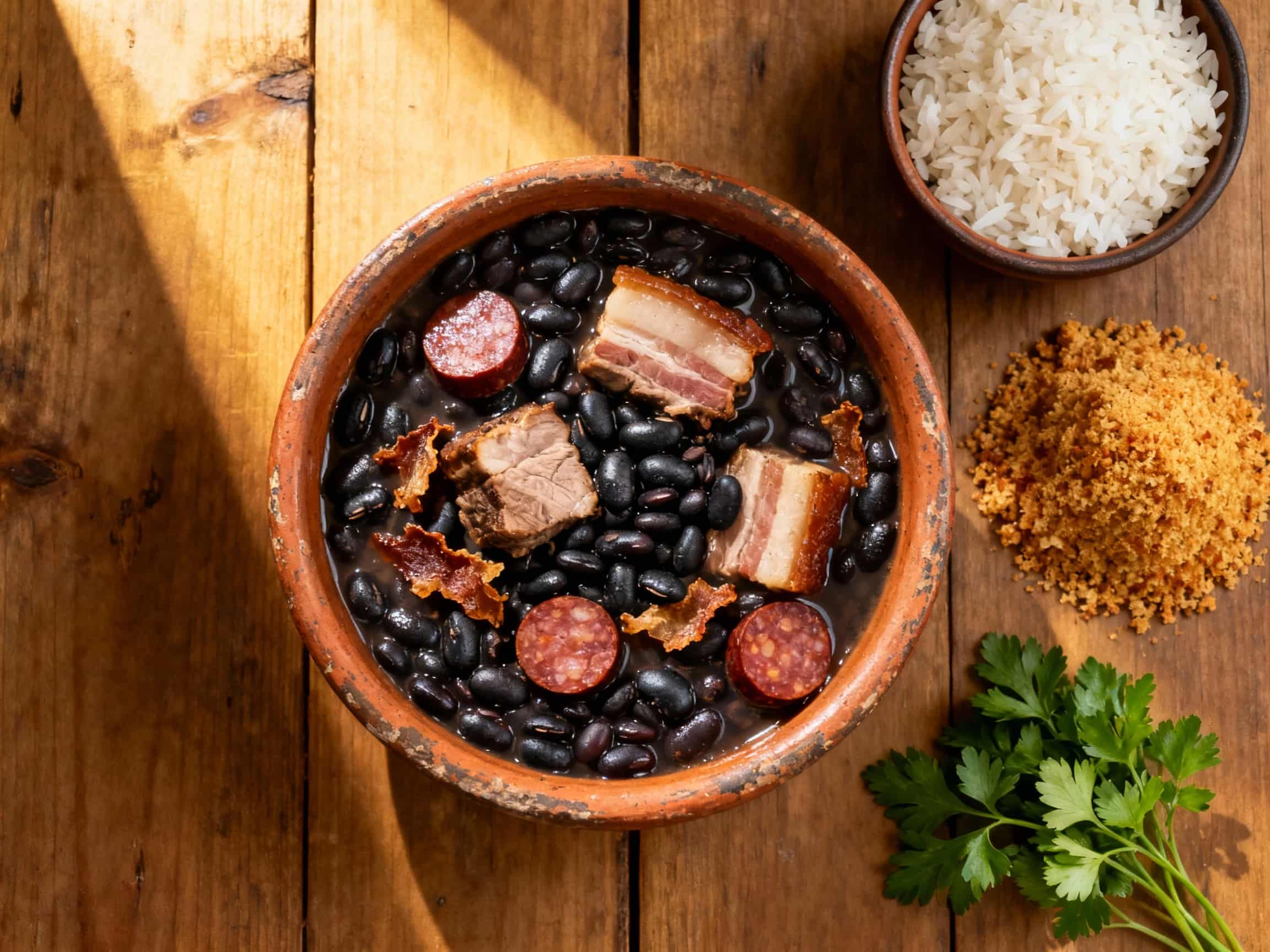
Feijoada
Feijoada à Portuguesa
- Country
- Portugal
- Region
- National
- Recipes
- 0 Recipes
Dish information
Feijoada, often hailed as Portugal's national dish, is a rich and hearty stew that embodies the spirit of communal dining and historical culinary adaptations. Its precise origins are debated, but it is widely believed to have evolved from similar bean and meat stews found across Europe, particularly those common in Portuguese monastic traditions. Over centuries, various ingredients were incorporated, reflecting the country's colonial reach and access to diverse foodstuffs. The dish as commonly known today, a deeply flavored melange of black beans simmered with a variety of pork and beef cuts—including ears, tail, and trotters—alongside sausages like chouriço and morcela, likely solidified its form in the 18th or 19th century. Its development is a testament to Portuguese resourcefulness, transforming less prized cuts of meat into a celebrated delicacy. The term 'feijoada' itself derives from 'feijão,' the Portuguese word for bean. While Brazil boasts its own iconic version, the Portuguese 'Feijoada à Portuguesa' often features different bean varieties and a distinct spice profile. Feijoada is more than just a meal; it's a cultural institution, typically served on Wednesdays and Saturdays, often accompanied by rice, farofa (toasted manioc flour), collard greens, and orange slices to cut through the richness. It evokes a sense of home, family gatherings, and national identity, a comforting aroma that fills kitchens across Portugal.
Timeline
The dish likely began to take its foundational form, incorporating diverse meats and beans.
Feijoada became a more established and recognized national dish throughout Portugal.
Popularized further through restaurants and home cooking, solidifying its status.
Feijoada recognized as a key element of Portuguese culinary heritage.
Related recipes
0 recipesWe'll add related recipes for this dish soon.